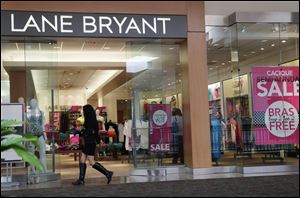
Retail sales dropped 0.5 percent in June
Third straight monthly decline
7/16/2012
Despite the declines, retail sales were still 4.7 percent higher in the April-June period than in the second quarter of 2011.
WASHINGTON — Americans cut their spending at retail businesses in June for a third straight month, as a weak job market has made consumers more cautious.
Retail sales fell 0.5 percent in June from May, the Commerce Department said Monday. Consumers spent less on autos, furniture, appliances, on building and garden supplies and at department stores.
Stocks fell after the report was released. The Dow Jones industrial average dropped 74 points in early trading. Broader indexes also declined.
“However hard you look, there’s just no good news in this report at all,” said Paul Ashworth, chief U.S. economist at Capital Economics.
Retail sales haven’t fallen for three straight months since the fall of 2008, at the height of the financial crisis.
Sales were still 4.7 percent higher in the April-June period than in the second quarter of 2011. And retail sales don’t include spending on services, which represents a larger portion of the economy.
Still, Ashworth said overall economic growth likely slowed to an annual rate of just 1.5 percent in the second quarter. That’s down from 1.9 percent in the January-March quarter and typically not enough to lower the unemployment rate.
Some of the weakness in recent months reflects falling gas prices. But even excluding sales at gas stations, retail spending fell 0.3 percent in June from May.
Consumers have grown less confident in the economy this spring. Hiring has slumped and wages have barely kept pace with inflation, keeping budgets tight. As a result, consumers have pulled back sharply on their spending, which drives 70 percent of economic activity.
“Recent weak jobs data have certainly done nothing to alter our view that consumer spending growth will be very modest at best in the quarters ahead,” said Joshua Shapiro, chief U.S. economist at MFR, Inc. “A silver lining in the economic clouds is that lower gasoline prices are helping to cushion the consumer.”
Other reports Monday were mixed.
Factory activity in the New York region is growing at a slightly faster pace this month, according to a survey. The Federal Reserve Bank of New York said its Empire State manufacturing index increased to 7.4 in July from a reading of 2.3 in June. Any number above zero indicates growth.
The International Monetary Fund slightly lowered its outlook for global growth over the next two years. Europe’s financial crisis and slower expansion in China and India have weakened the world economy. The IMF predicts global growth of just 3.5 percent this year, down from its forecast of 3.6 percent in April. It says the U.S. will grow just 2 percent.
The retail spending report showed sales at auto dealers — one of the economy’s strongest areas this year — fell 0.6 percent in June compared to May. That’s a gloomier assessment of the industry than earlier reports from automakers.
The automakers said sales increased 22 percent in June from the same month in 2011. However, they do not adjust their sales data for seasonal changes. And their data only reflect changes compared to the same month in the previous year.
The weakness in June went well beyond auto sales. The government report showed sales fell 0.7 percent at department stores and declined 1.6 percent at building supply stores. Sales at furniture stores and electronics and appliance stores both fell 0.8 percent.
Sales at gas stations declined 1.8 percent after a 2 percent drop in May. The declines reflected lower gas prices, which are down more than 50 cents since early April.
The economy is expanding too slowly to lower the unemployment rate, which stayed at 8.2 percent in June.
Employers have created an average of just 75,000 jobs a month in the April-June quarter — a third of the monthly job growth during the previous three months.